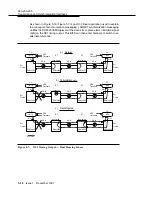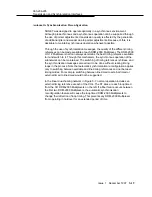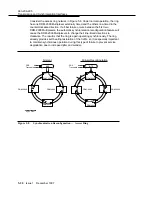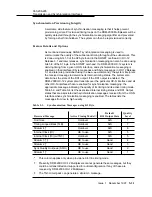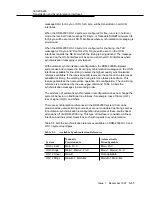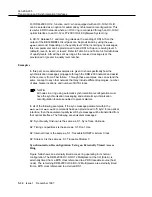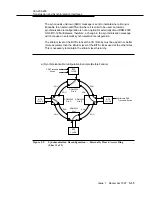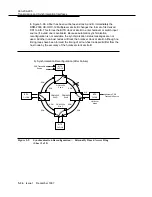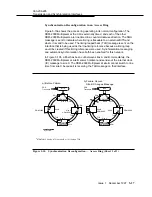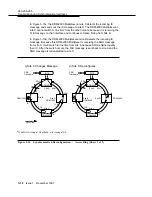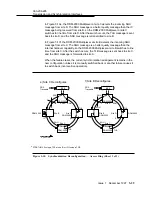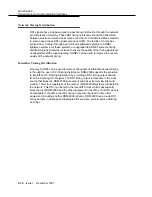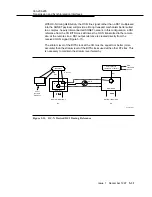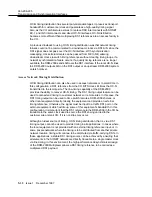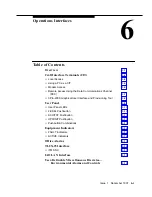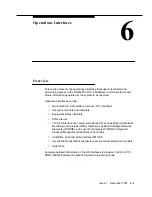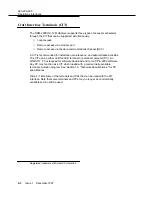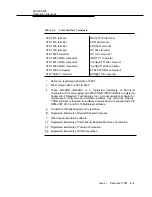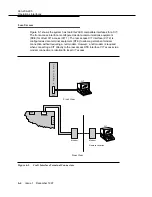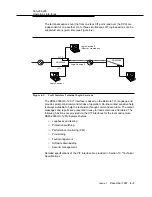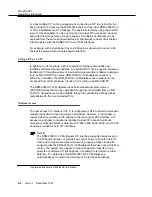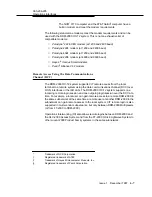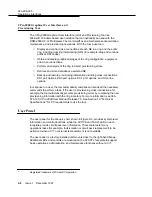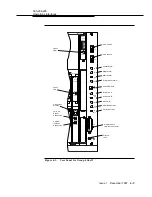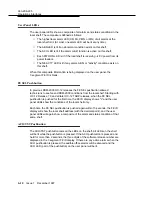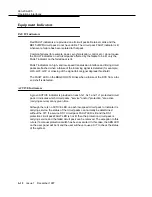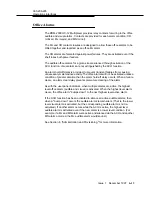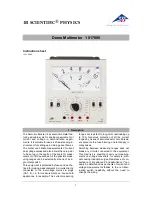
363-206-295
Transmission and Synchronization Interfaces
5-32
Issue 1
December 1997
OC-N timing distribution has several potential advantages. It preserves transport
bandwidth for customer services and guarantees a high-quality timing signal.
Also, as the CO architecture evolves to replace DSX interconnects with SONET
EC-1 and IS-3 interconnects and direct OC-N interfaces, OC-N distribution
becomes more efficient than multiplexing DS1 references into an access facility in
the CO.
A previous drawback to using OC-N timing distribution was that network timing
failures could not be communicated to downstream clocks via DS1 AIS, since the
DS1 signal does not pass over the OC-N interface. With synchronization
messaging, clock stratum levels can be passed from NE to NE, allowing
downstream clocks to switch timing references without creating timing loops, if a
network synchronization failure occurs. If a quality timing reference is no longer
available, the DDM-2000 sends AIS over the DS1 interface. If the local OC-N lines
fail, DDM-2000 outputs AIS on the DS1 output or an upstream DDM-2000 system
enters holdover.
Access Network Timing Distribution
5
OC-N timing distribution can also be used in access networks or to small COs. In
this configuration, a DS1 reference from the CO BITS clock still times the OC-N
transmitted to the remote site. The line-timing capability of the DDM-2000
provides the ability to recover OC-N timing. The DS1 timing output feature can be
used to also extend timing to customer networks or remote sites. In this case, the
DS1 timing output can be used to time switch remotes, DDM-2000 shelves, or
other local equipment directly. Ideally, the equipment can provide an external
timing reference. Otherwise, the signal must be input to a traffic DS1 port on the
external equipment which will tie up some of this equipment's bandwidth. In this
configuration, it is important that the DS1 reference to the DDM-2000 in the CO be
traceable to the same clock used to source the DS1s being carried to the
customer site or small CO. If it is not, slips may occur.
Although an ideal source of timing, OC-N timing distribution, that is, via a DS1
timing output, cannot be used to provide timing in all applications. In cases where
the local equipment is not provided with an external timing reference input, or in
some private networks where the timing is to be distributed from another private
network location, timing will continue to be distributed via traffic-carrying DS1s. In
these applications, a stable DS1 timing source can be achieved by ensuring that
all elements in the SONET network are directly traceable to a single master clock
via line-timing. In this environment, the high-performance desynchronizer design
of the DDM-2000 Multiplexer allows a DS1 timing reference to be carried as a
multiplexed DS1 payload.

